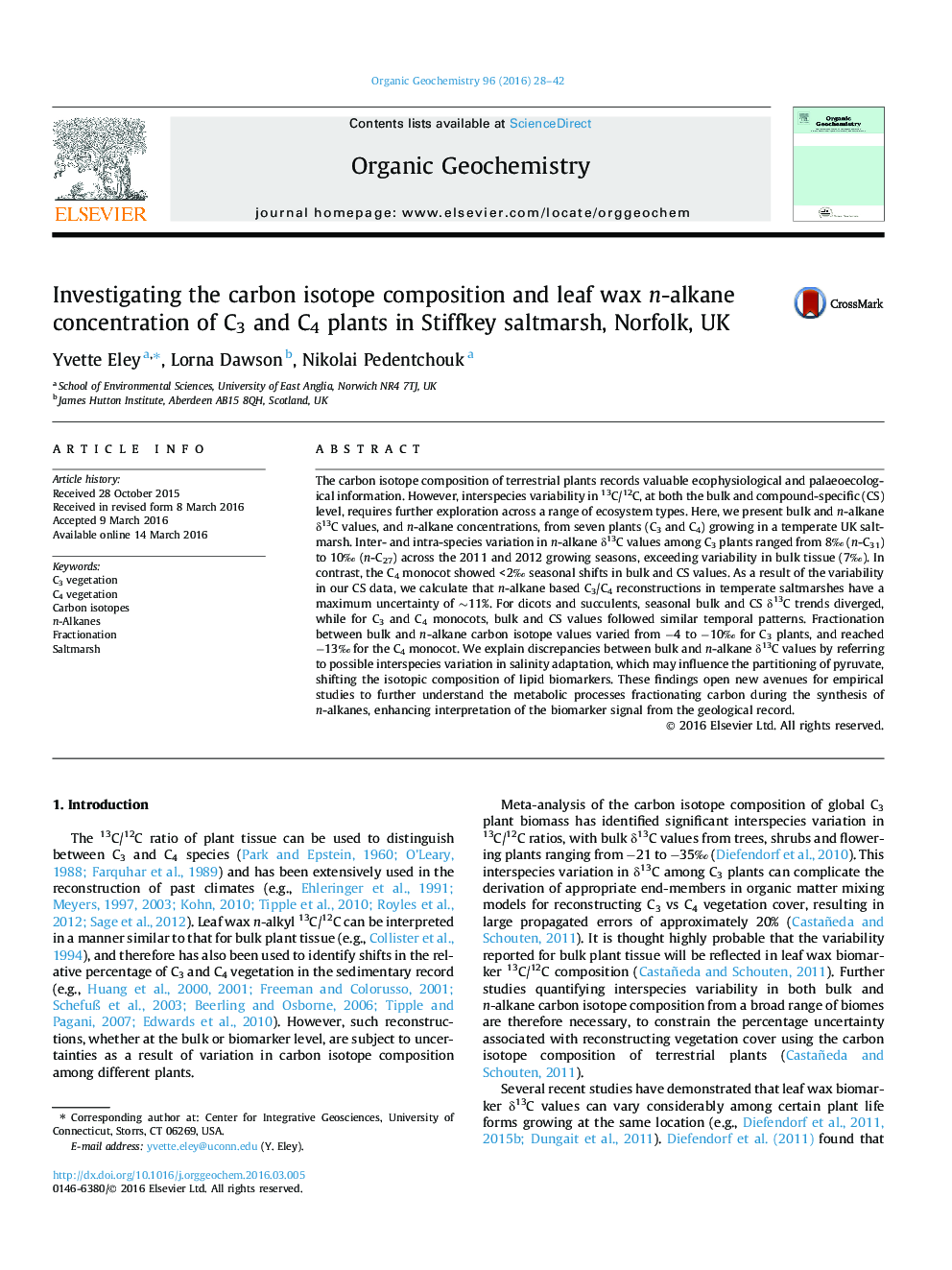| Article ID | Journal | Published Year | Pages | File Type |
|---|---|---|---|---|
| 5162359 | Organic Geochemistry | 2016 | 15 Pages |
Abstract
The carbon isotope composition of terrestrial plants records valuable ecophysiological and palaeoecological information. However, interspecies variability in 13C/12C, at both the bulk and compound-specific (CS) level, requires further exploration across a range of ecosystem types. Here, we present bulk and n-alkane δ13C values, and n-alkane concentrations, from seven plants (C3 and C4) growing in a temperate UK saltmarsh. Inter- and intra-species variation in n-alkane δ13C values among C3 plants ranged from 8â° (n-C31) to 10â° (n-C27) across the 2011 and 2012 growing seasons, exceeding variability in bulk tissue (7â°). In contrast, the C4 monocot showed < 2â° seasonal shifts in bulk and CS values. As a result of the variability in our CS data, we calculate that n-alkane based C3/C4 reconstructions in temperate saltmarshes have a maximum uncertainty of â¼11%. For dicots and succulents, seasonal bulk and CS δ13C trends diverged, while for C3 and C4 monocots, bulk and CS values followed similar temporal patterns. Fractionation between bulk and n-alkane carbon isotope values varied from â4 to â10â° for C3 plants, and reached â13â° for the C4 monocot. We explain discrepancies between bulk and n-alkane δ13C values by referring to possible interspecies variation in salinity adaptation, which may influence the partitioning of pyruvate, shifting the isotopic composition of lipid biomarkers. These findings open new avenues for empirical studies to further understand the metabolic processes fractionating carbon during the synthesis of n-alkanes, enhancing interpretation of the biomarker signal from the geological record.
Related Topics
Physical Sciences and Engineering
Chemistry
Organic Chemistry
Authors
Yvette Eley, Lorna Dawson, Nikolai Pedentchouk,
